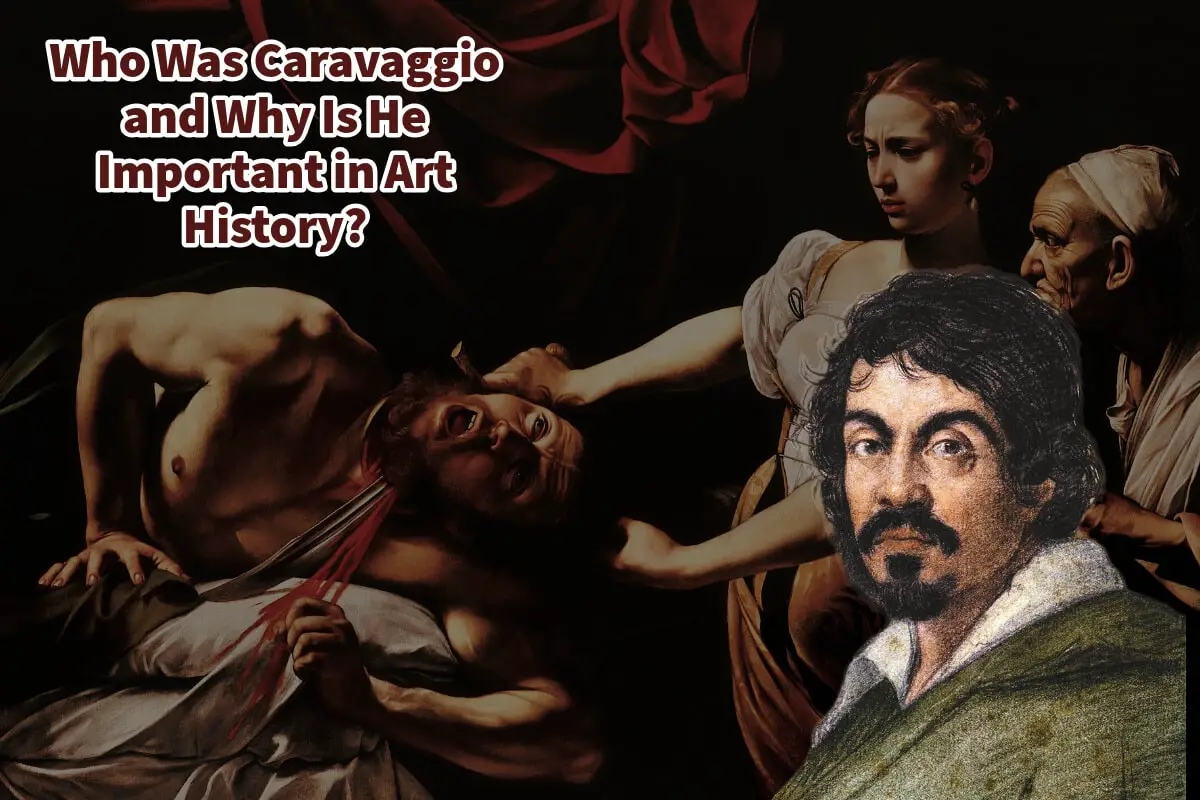Caravaggio, born Michelangelo Merisi da Caravaggio (1571–1610), was an Italian painter whose revolutionary approach to art forever changed the course of Western painting.
Caravaggio is known for his dramatic use of light and shadow, raw emotional intensity, and controversial life. Caravaggio’s works have captivated audiences for centuries. He was a pioneer of Baroque art, influencing countless artists and shaping the visual language of storytelling in painting. Read on as we’ll explore Caravaggio’s life, artistic innovations, and enduring legacy. We’ll also answer 15 key questions about his work and why he remains one of the most important figures in art history.
Table of Contents
- Caravaggio’s Life: A Dramatic Story
- Why Is Caravaggio Important in Art History?
- 15 Questions and Answers About Caravaggio and His Importance
- Five Iconic Works by Caravaggio
- Where Can You See Caravaggio’s Works?
- Related Questions
Caravaggio’s Life: A Dramatic Story
Caravaggio was born in Milan in 1571 and grew up in Caravaggio, a small town near Bergamo, which later became his namesake.
His early life was marked by tragedy, as his father and grandparents died of the plague when he was just six years old. This turbulent beginning perhaps foreshadowed the dramatic and often chaotic life he would lead.
Caravaggio moved to Rome in his early twenties, seeking opportunities as an artist. There, he quickly gained recognition for his innovative style, which broke away from the idealized forms of Renaissance art. Instead, Caravaggio painted real people, often using ordinary individuals as models, and portrayed them with unflinching realism.
However, Caravaggio’s personal life was as tumultuous as his art was groundbreaking. He was known for his violent temper and frequent run-ins with the law. In 1606, he killed a man in a brawl and fled Rome, spending the rest of his life on the run.
Despite his troubled existence, Caravaggio produced some of the most iconic works in art history, leaving behind a legacy that continues to inspire artists today.
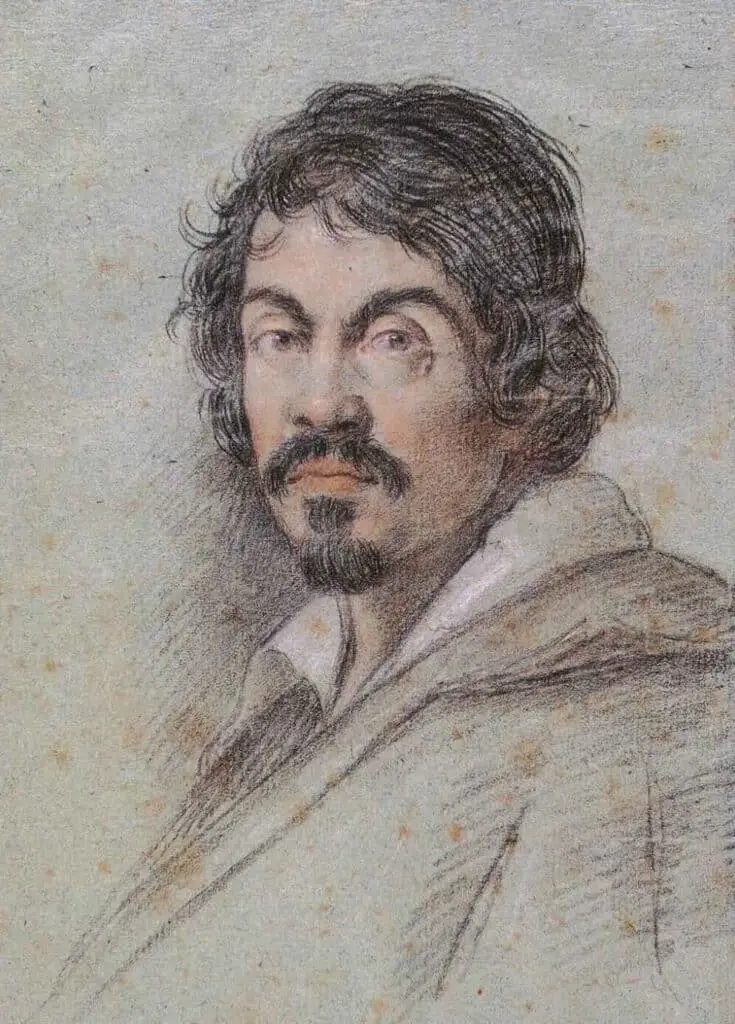
Why Is Caravaggio Important in Art History?
Caravaggio’s importance in art history lies in his revolutionary approach to painting and storytelling. He rejected the idealized and often sanitized depictions of religious and mythological subjects that were common in Renaissance art. Instead, he brought a raw, visceral realism to his works, portraying his subjects with imperfections, humanity, and emotional depth.
Key Contributions:
- Chiaroscuro: Caravaggio perfected the dramatic interplay of light and shadow, known as chiaroscuro, which became a hallmark of Baroque art. His use of light created a sense of drama and focus, drawing viewers into the scene.
- Realism: He painted his subjects as they were, often using ordinary people as models for saints and biblical figures. This approach made his works relatable and grounded.
- Emotional Intensity: Caravaggio’s paintings are filled with raw emotion, capturing moments of tension, sorrow, and triumph with unparalleled intensity.
- Influence: Caravaggio’s style had a profound influence on numerous artists, including Peter Paul Rubens, Rembrandt, and Diego Velázquez, shaping the Baroque movement and its subsequent developments.
15 Questions and Answers About Caravaggio and His Importance
Who Was Caravaggio?
Caravaggio was an Italian Baroque painter known for his dramatic use of light and shadow, as well as his realistic and emotionally intense depictions of religious and mythological subjects.
What Is Chiaroscuro, and Why Is It Associated with Caravaggio?
Chiaroscuro is the use of strong contrasts between light and dark to create drama and focus. Caravaggio mastered this technique, making it a defining feature of his work and a hallmark of Baroque art.
What Are Some of Caravaggio’s Most Famous Works?
Caravaggio’s most famous works include The Calling of St. Matthew, Judith Beheading Holofernes, The Supper at Emmaus, The Conversion of Saint Paul, and David with the Head of Goliath.
Why Did Caravaggio Paint Ordinary People as Biblical Figures?
Caravaggio believed in portraying the truth of human experience. By using ordinary people as models, he brought a sense of realism and relatability to his religious scenes, making them accessible to viewers.
What Was Caravaggio’s Influence on Baroque Art?
Caravaggio’s dramatic style and emotional intensity became a cornerstone of Baroque art, influencing artists across Europe and shaping the movement’s visual language.
Why Was Caravaggio’s Life So Controversial?
Caravaggio had a violent temper and frequently clashed with the law. His most infamous act was killing a man in a brawl in 1606, which forced him to flee Rome and live as a fugitive.
What Is Caravaggio’s Legacy?
Caravaggio’s legacy lies in his ability to transform the way stories were told through art. His realism, use of light, and emotional depth continue to influence artists and captivate audiences today.
What Was Caravaggio’s Role in Religious Art?
Caravaggio revolutionized religious art by portraying biblical scenes with raw realism and emotional intensity, making them more relatable and impactful for viewers.
How Did Caravaggio’s Personal Life Affect His Art?
Caravaggio’s tumultuous life and inner struggles often found their way into his art, adding layers of complexity and emotion to his work.
What Is Caravaggio’s Most Iconic Painting?
One of Caravaggio’s most iconic paintings is The Calling of St. Matthew, which exemplifies his mastery of light, realism, and storytelling.
Why Was Caravaggio Criticized During His Lifetime?
Caravaggio’s realistic depictions of religious figures were considered shocking and even blasphemous by some critics, who were accustomed to idealized portrayals.
What Is the Significance of Light in Caravaggio’s Paintings?
Caravaggio used light to guide the viewer’s focus, create drama, and symbolize spiritual themes, making it a central element of his storytelling.
Where Can You See Caravaggio’s Works Today?
Caravaggio’s works can be seen in major museums worldwide, including the Uffizi Gallery in Florence, the Louvre in Paris, and the National Gallery in London.
How Did Caravaggio Influence Modern Artists?
Caravaggio’s emphasis on realism and emotional storytelling continues to inspire modern artists, particularly those working in photography, cinema, and contemporary painting.
Why Is Caravaggio Still Relevant Today?
Caravaggio’s art speaks to universal human experiences, making his works timeless. His ability to capture raw emotion and tell compelling stories ensures his relevance across generations.
Five Iconic Works by Caravaggio
1. The Calling of St. Matthew (1599–1600)
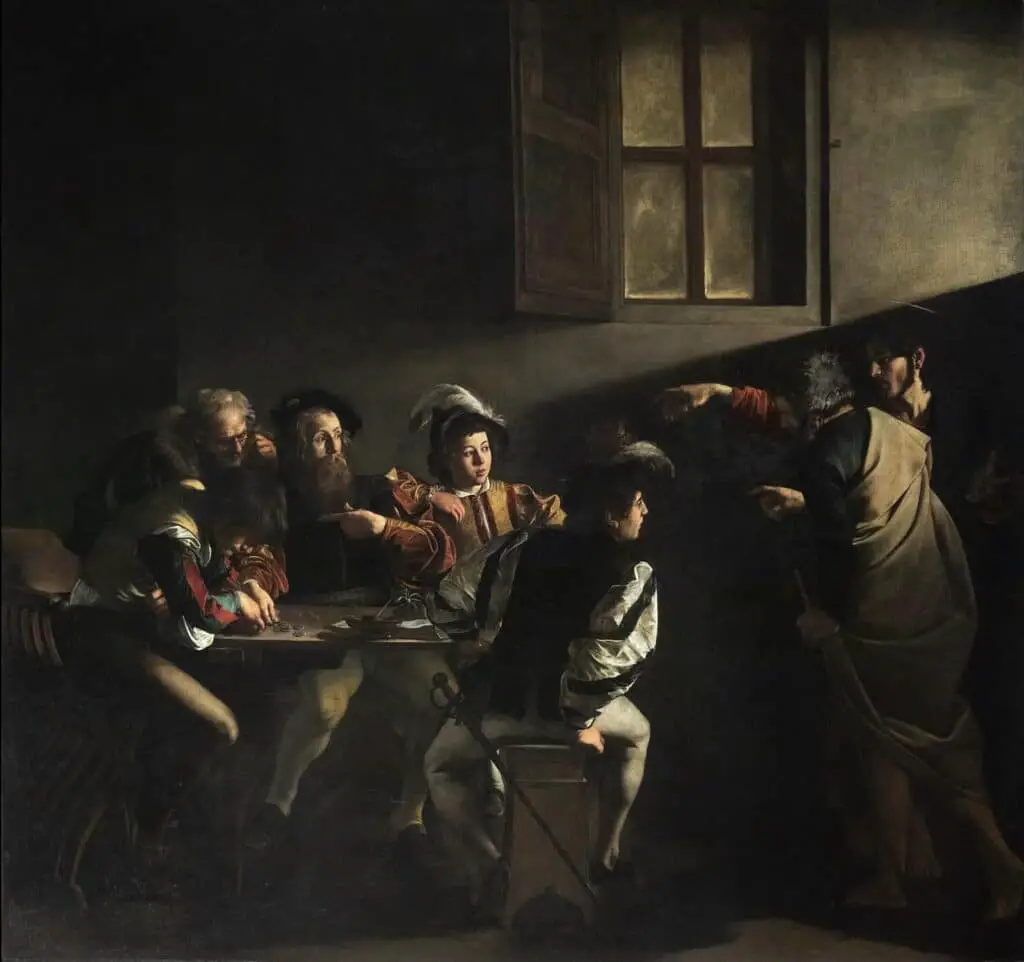
This masterpiece depicts the moment Jesus calls Matthew to follow him. The dramatic use of light and shadow emphasizes the spiritual significance of the scene.
2. Judith Beheading Holofernes (1598–1599)
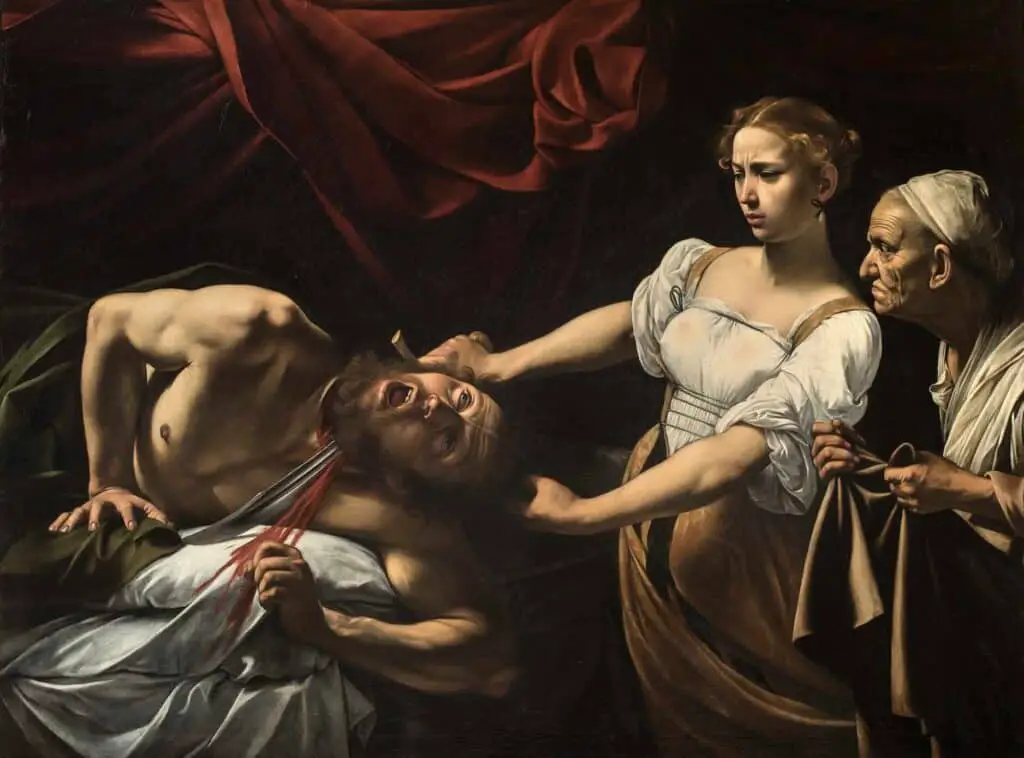
A strikingly violent yet emotionally charged painting, this work portrays Judith’s bravery and determination as she kills the Assyrian general Holofernes.
3. The Supper at Emmaus (1601)
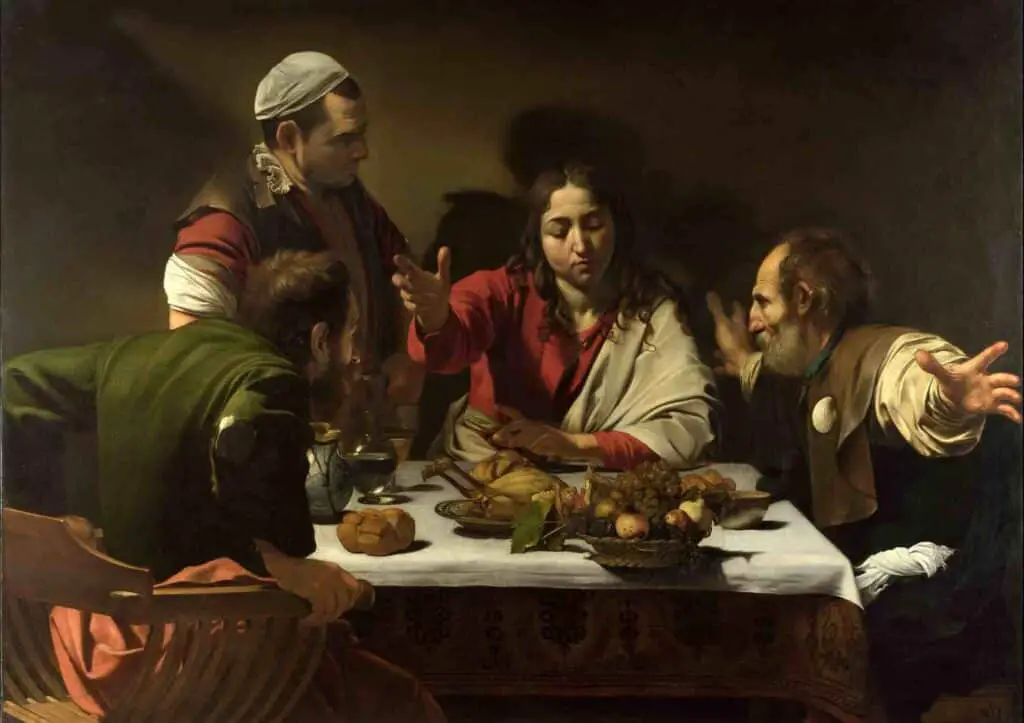
This painting captures the moment the resurrected Christ reveals himself to his disciples. Caravaggio’s use of light and realism brings the scene to life.
4. David with the Head of Goliath (1610)
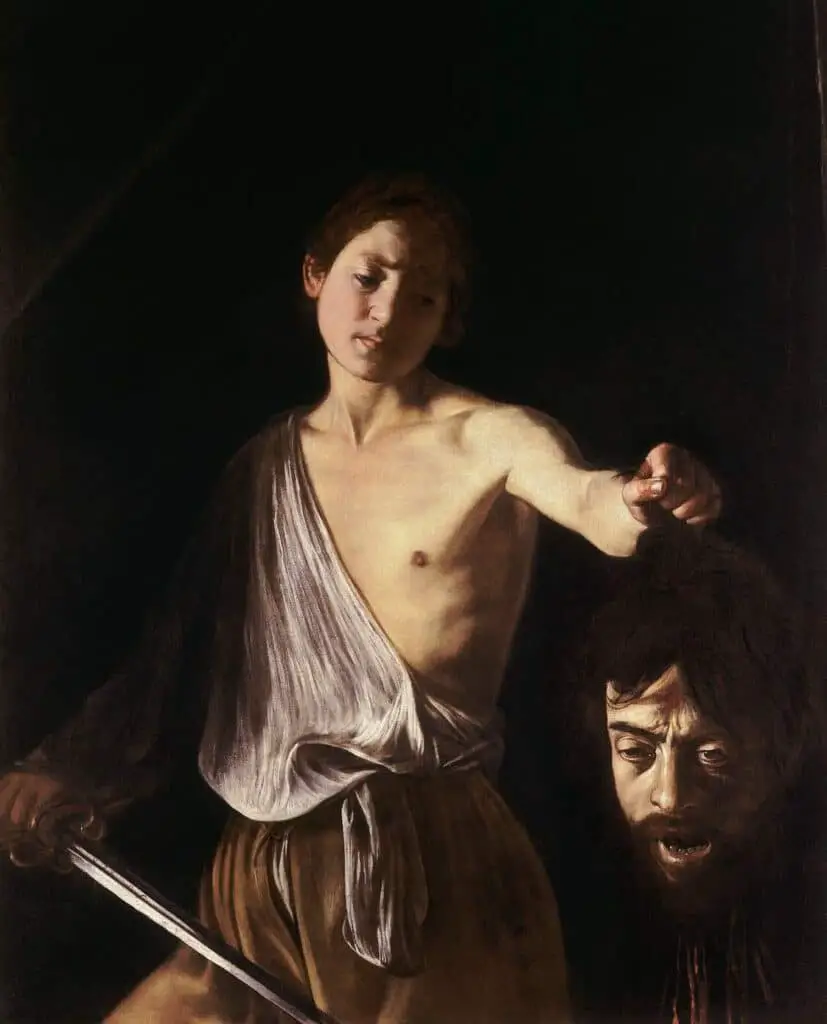
A haunting work that reflects Caravaggio’s inner turmoil, this painting shows David holding the severed head of Goliath, which is believed to be a self-portrait of Caravaggio.
5. The Conversion of Saint Paul (1601)
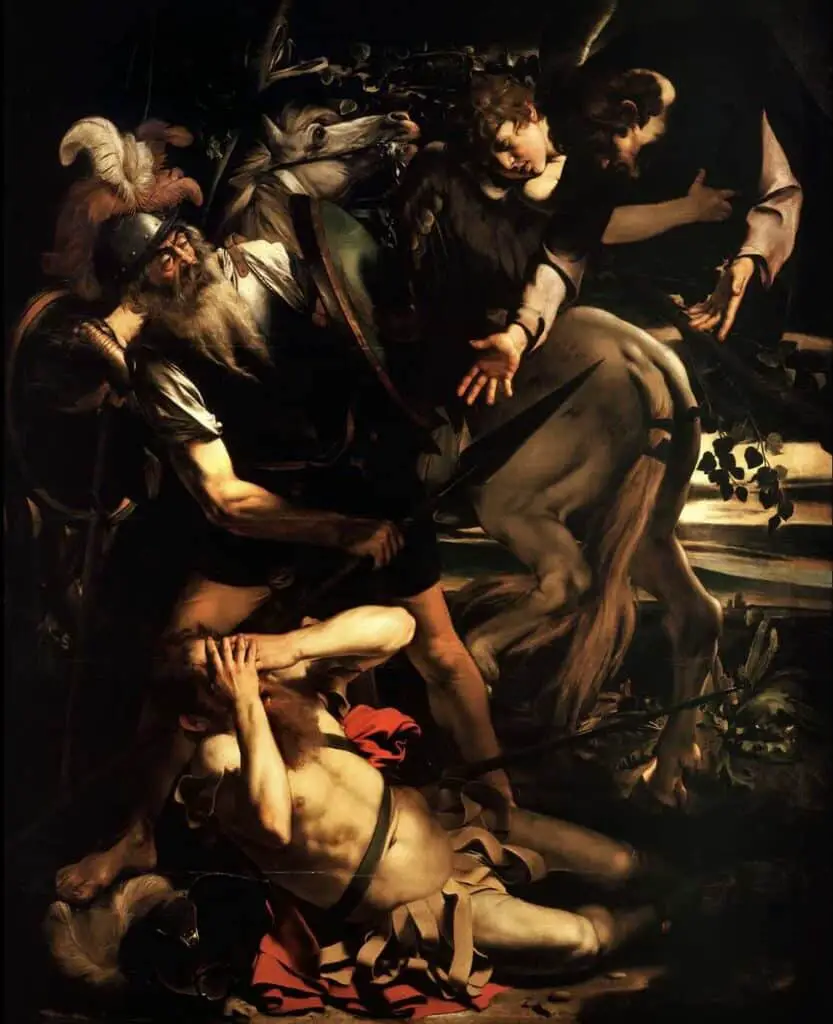
This dramatic depiction of Paul’s conversion on the road to Damascus showcases Caravaggio’s ability to convey spiritual transformation through light and emotion.
Where Can You See Caravaggio’s Works?
Caravaggio’s masterpieces are housed in museums and churches across Europe. Some of the most notable locations include:
- Uffizi Gallery (Florence, Italy): Home to several of Caravaggio’s works, including Medusa.
- National Gallery (London, UK): Features The Supper at Emmaus and Boy Bitten by a Lizard.
- Louvre Museum (Paris, France): Displays The Death of the Virgin.
- Church of San Luigi dei Francesi (Rome, Italy): Houses The Calling of St. Matthew and other works from Caravaggio’s series on St. Matthew.
- Museo del Prado (Madrid, Spain): Contains David with the Head of Goliath and other masterpieces.
Caravaggio was more than an artist; he was a revolutionary who transformed the way stories were told through painting. His ability to capture raw emotion, use light to create drama, and portray his subjects with unflinching realism made him a pioneer of Baroque art.
Despite his troubled life, Caravaggio’s works continue to resonate with audiences, reminding us of the power of art to reflect the human experience. His influence on art history is immeasurable, and his legacy lives on in the countless artists inspired by his genius.
For art enthusiasts, exploring Caravaggio’s works is not just a journey into the past—it’s an encounter with timeless beauty, emotion, and storytelling.
Anita Louise Art is dedicated to art education, great artists, and inspiring others to find and create their art. We love art that uplifts and inspires. #ArtToMakeYouSmile! #ArtToMakeYouHappy!
If you want to see any of my art, you can find out more by clicking here. If you are interested in what inspires me and my paintings, you can discover more by clicking here.
We have a free newsletter and would love you to be part of our community; you can subscribe to the newsletter by clicking here. If you have any questions, I would be happy to talk to you anytime. You can reach me, Anita, by clicking here.
Subscribe to our Anita Louise Art YouTube Channel with great videos and information by clicking here.
Join us for our podcast “5 Minutes With Art.” Spend just 5 minutes a week with us to discover and learn about great art and artists. You can find out more about our podcast by clicking here.
Related Questions
Japanese Woodblock Prints: Artistic Perfection
I have always been a great fan of Japanese woodblock print artists. I find the woodblock print artists t to be excellent in perfecting the woodblock print techniques.
The Japanese woodblock prints had many advantages and were beneficial technology for its day. The more the Japanese publishers began to print woodblock art, the easier it became to print more complicated and intricate designs. They were then able to sell this duplicated art to the masses.
By clicking here, you can learn more by reading Japanese Woodblock Prints: Artistic Perfection.
Why Do People Use Pinterest?, 13 Reasons Why
People use Pinterest to explore and to be inspired. Pinterest allows you to be your own curator. Pinterest helps you find exciting new products, brands, and ideas. For many people, Pinterest is a kind of therapy. Pinterest is an app you can do solo or interact with others. Pinterest is an easy and straightforward app to use.
By clicking here, you can learn more by reading Why Do People Use Pinterest?, 13 Reasons Why.
Is Art An Natural Gift, Or Can Anyone Be Good At Art If They Practice?
Most artists have some natural gift or desire to be an artist. But it is through their education, hard work, practice, and association with other artists that make all the difference. Having a natural gift is the start of becoming an artist, but just having a natural gift will not make you a good artist. Becoming a great artist requires practice, education, and a lot of hard work.
By clicking here, you can learn more by reading Is Art An Natural Gift, Or Can Anyone Be Good At Art If They Practice?

